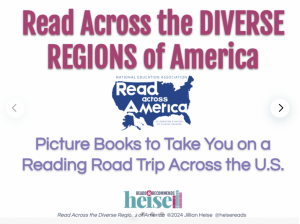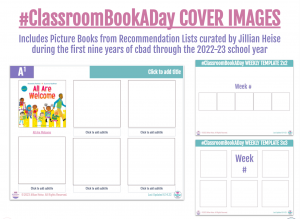Kate Messner & Alexandra Bye’s Dr. Fauci picture book carries a strong message about the mindset that can lead to science discovery in an engaging biography young children will understand.
Dr. Fauci: How a Boy from Brooklyn Became America’s Doctor draws from interviews author Kate Messner conducted with Dr. Fauci, himself, and follows Anthony from his Brooklyn beginnings through medical school and his challenging role working with seven U.S. presidents to tackle some of the biggest public health challenges of the past fifty years, including the COVID-19 pandemic. Illustrated by Alexandra Bye, the picture book also features extensive backmatter, including a timeline, recommended reading, a full spread of facts about vaccines and how they work, and Dr. Fauci’s own tips for future scientists.

The definitive picture book biography of Dr. Anthony Fauci, the director of the National Institute of Allergy and Infectious Diseases and one of the most crucial figures in the COVID-19 pandemic.
Before he was Dr. Fauci, director of the National Institute of Allergy and Infectious Diseases, Anthony Fauci was a curious boy in Brooklyn, delivering prescriptions from his father’s pharmacy on his blue Schwinn bicycle. His father and immigrant grandfather taught Anthony to ask questions, consider all the data, and never give up—and Anthony’s ability to stay curious and to communicate with people would serve him his entire life.
This engaging narrative, which draws from interviews the author did with Dr. Fauci himself, follows Anthony from his Brooklyn beginnings through medical school and his challenging role working with seven US presidents to tackle some of the biggest public health challenges of the past fifty years, including the COVID-19 pandemic. Extensive backmatter rounds out Dr. Fauci’s story with a timeline, recommended reading, a full spread of facts about vaccines and how they work, and Dr. Fauci’s own tips for future scientists.
I was able to email Kate some questions this summer, but decided to wait on posting the interview until FDA/CDC approval for a COVID-19 vaccine for elementary age children came. And it did yesterday!
As kids in our classrooms anticipate getting their vaccinations, this is the perfect time to share this picture book with lessons about science, vaccines, and the human nature that is often behind the scientific minds that keep us all safer.
1: I’m sure Dr. Fauci was someone many writers were thinking could make an interesting subject for a picture book biography. How did it come to be that you wrote this book and were able to connect with him?
I was actually working on a totally different book in the spring of 2020 – a follow-up to our 2020 picture book The Next President (illustrated by Adam Rex) called The Next Great Scientist, about the childhoods of people who grew up to be scientists. As part of my research for that book, I’d reached out to a number of living scientists to ask about their childhoods, and I’d sent an email to Dr. Fauci’s office. He replied with a great story about how he used to ride his blue Schwinn bicycle around Brooklyn, delivering prescriptions for his parents’ pharmacy. The image of a young Dr. Fauci riding around the neighborhood with a bicycle basket full of prescriptions stuck with me, and I realized that Dr. Fauci’s life story would make a great picture book, all on its own. I spent the summer doing research, learning everything I could about Dr. Fauci’s life and career, and then emailed his office again to request a Zoom interview. It was during one of the busiest times of the pandemic, just before the first vaccines were approved, so I realized it was probably a long shot, but I was delighted when his staff wrote back and offered to arrange an interview after one of his work days at NIAID in November.
2: As a teacher/librarian reading this book, I noticed there are references to scientific thinking & the scientific method in indirect ways throughout. How did you go about planning that aspect of this manuscript & choose what to include?
My biggest hope for this book is that it will inspire kids who aspire to work in science or public health themselves, so sharing the reality of those careers was important – especially when it comes to the big questions our scientists face every day, and the fact that they don’t have all the answers. Science is always a process of asking questions, forming hypotheses, gathering data, and then revising those hypotheses based on the data. That’s a concept that some adults have a tough time with, but kids need to understand that science is always evolving as we learn more, and that they can be a part of that process, too.When I was working with my editor Kendra Levin at Simon & Schuster to revise this book, we kept coming back to that idea. Where did Dr. Fauci learn to think like a scientist, and how has that way of thinking followed him through his forty-year career? When you’re writing a picture book biography, you always end up with more material than you can fit into the pages, so in this case, it was a matter of choosing scenes from Dr. Fauci’s life that really illustrated those essential points about science.
3: One thing I love about backmatter in picture books is the way those additional information pieces can be used as a paired text to the narrative of the story, & help kids learn more about the topic. How did you decide what types of information to put in this book’s backmatter?
As soon as we started working on this book, Kendra encouraged me to include a lot of really rich back matter, and that endeared her to me immediately. We ended up including a detailed timeline of Dr. Fauci’s life, along with a two-page spread on vaccines and how they work, recommended reading, and “Five Tips for Future Scientists” contributed by Dr. Fauci. We wanted to be sure to include factual information about vaccines because the book is coming out at a time when more young people are about to be vaccinated, and there’s been so much misinformation about vaccines. I’m a huge fan of back matter in nonfiction picture books because it really creates a two-books-in-one situation; there’s a streamlined narrative text that can be shared as a read-aloud as well as additional information that can teachers can share and curious readers can explore on their own.
4: As the writer, what kind of input into Alexandra Bye’s illustrations did you have during the process of creating this picture book? Or is it all a surprise to you when it’s done?
With a nonfiction picture book like this one, there’s often a lot of back and forth between the author and illustrator. For this book, I’d shared a file full of reference photographs with Alexandra, including pictures that Dr. Fauci shared with us, showing what he looked like at different ages and what his family members looked like as he was growing up. There were questions throughout the process, too. As Alexandra went from sketches to final art, I’d get notes asking about Dr. Fauci’s neighborhood or the school colors at his alma mater. She worked hard to get all those details right, and every time I see the art for this book, I’m just in awe of how she brought Dr. Fauci’s childhood to life with her illustrations.
5: What do you most hope kids (and adults) take away from Dr. Fauci’s story and this book?
So often, kids who have seen Dr. Fauci wearing his suit and standing at a podium next to the president think of him as this serious, important person on the evening news, and they might not stop to think about the fact that he used to be a curious kid, just like them. Before he was America’s top infectious disease expert, he was a boy riding his bike around Brooklyn, playing stickball, hearing stories from his grandfather, learning to ask questions and communicate with people. I hope kids who read this book will understand that science belongs to all of us. And I hope they’ll start thinking about the work they might do someday, the contributions they might make in the world, and be inspired to dream big.

























